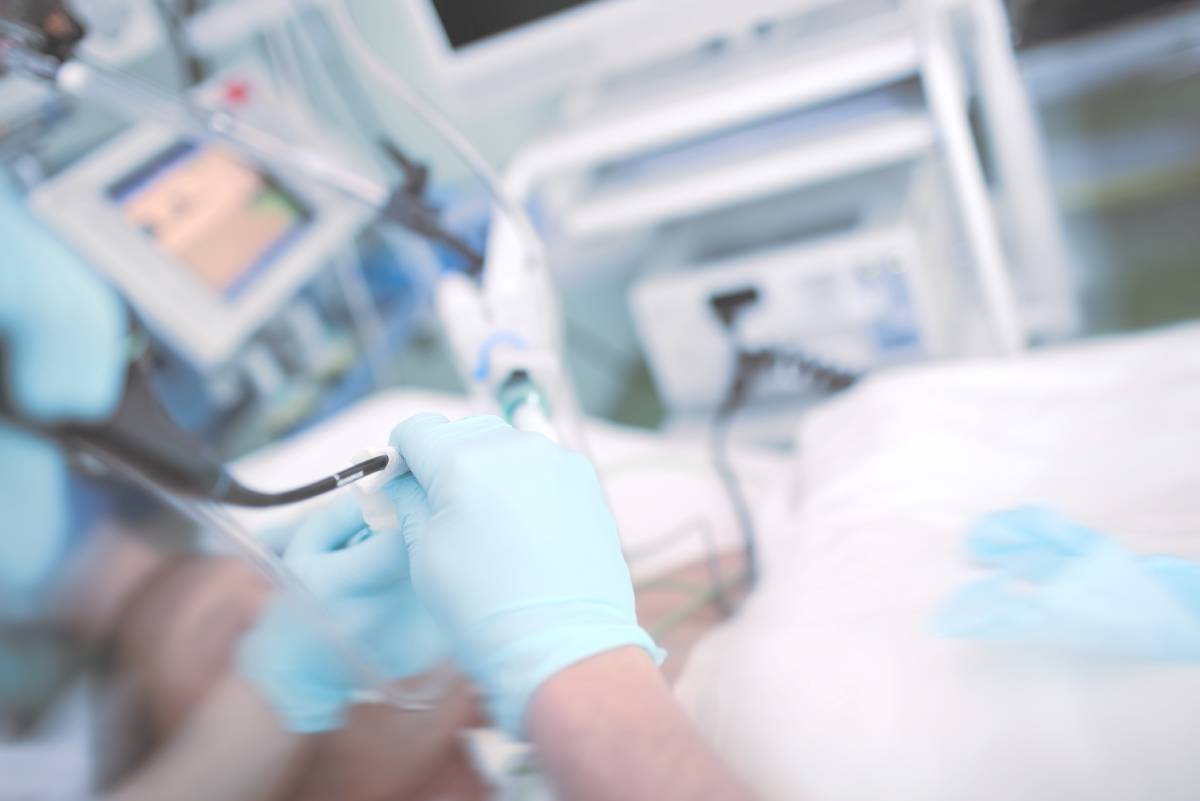Anesthesia for Awake Fiberoptic Intubation

Awake fiberoptic intubation (AFOI) is a common technique for patients with an anticipated difficult airway, in which a flexible fiberoptic bronchoscope is used to provide imaging during intubation. The intubation can be orotracheal or nasotracheal (Collins and Blank, 2014). During AFOI, it is important to keep the patient comfortable, maintain hemodynamic stability, and maintain the airway with spontaneous ventilation (Wang et al, 2021). Local anesthesia and sedation are used to achieve these outcomes. A recent meta-analysis reviewing anesthesia protocols for awake fiberoptic intubation acknowledged that there is wide variety in approaches and was unable to recommend a best practice but suggested that multiple protocols can be safe and effective (Cabrini et al, 2019).
Local anesthetics can be given in several different ways, including nebulization, “spray-as-you-go,” and regional nerve blocks. The meta-analysis was unable to directly compare these methods to one another; however, it suggested that regional nerve blocks are slightly superior and work faster than other methods, but are more invasive (Cabrini et al, 2019). For example, using lidocaine to block the laryngeal nerve decreased intubation time and increased patient comfort (Alessandri et al, 2020). The meta-analysis also suggested that nebulized lidocaine was easy to use and similarly effective to the spray-as-you-go method (Cabrini et al, 2019). Spray-as-you-go means that lidocaine is sprayed multiple times directly into the trachea during the insertion of the tube (Wang et al, 2021). Another alternative to spray-as-you-go is cricothyroid membrane puncture, which is an intratracheal injection of lidocaine. Although both methods are effective, one study has found that cricothyroid membrane puncture decreases intubation time and increases patient satisfaction relative to the spray-as-you-go method (Wang et al, 2021).
Conscious sedation is used to keep patients comfortable and decrease the hemodynamic response, while still maintaining spontaneous breathing. Sedation depth can be measured by subjective clinical tools such as the Ramsey Sedation Score (RSS), with a score of 6 denoting maximum sedation; sedation can also be measured more objectively with the bispectral index (BIS), a metric calculated from electroencephalogram (EEG) data where 0 denotes maximum sedation (Gnaneswaran et al, 2020). In conscious sedation for AFOI, RSS should be around 2-3 and BIS should range between 80-86 (Gnaneswaran et al, 2020).
There are many sedatives used for AFOI, in many different doses, given both as a single bolus or continuous infusion. The most studied of these is dexmedetomidine. Dexmedetodimine is considered effective, well tolerated and associated with better intubation conditions; however, it can also cause severe bradycardia (slow heart rate) (Cabrini et al, 2019). Other medications used include the anesthetics propofol and sevoflurane and opioids such as fentanyl, sufentanil and remifentanil. Opioids are considered safe and effective as well, and can reduce coughing and gag reflex; however, patient recall of the procedure is high (Cabrini et al, 2019). A benzodiazepine such as midazolam given either as premedication or at the time of the procedure can address that. Additionally, the safety of both benzodiazepines and opioids is increased by the availability of antagonists (Cabrini et al, 2019).
The recent meta-analysis found that dexmedetomidine may have some superiority to propofol in terms of patient comfort and ease of intubation, and to opioids without benzodiazepines in terms of post-procedure recall (Cabrini et al, 2019). Dexmedetomidine and sevoflurane were also associated with lower incidence of blood oxygen desaturation and apnea (temporary cessation of breathing). However, use of sevoflurane can be challenging and may have increased risk of environmental contamination (Cabrini et al, 2019).
References
Alessandri F, Bellucci R, Tellan G, et al. Awake fiberoptic intubation in patients with stenosis of the upper airways: Utility of the laryngeal nerve block. Clin Ter. 2020;171(4):e335-e339. doi:10.7417/CT.2020.2236
Cabrini L, Baiardo R, Ball L, Filippini M, Fominskiy E, Pintaudi M, Putzu A, Votta CD, Sorbello M, Antonelli M, Landoni G, Pelosi P, Zangrillo A. Awake Fiberoptic Intubation Protocols in the Operating Room for Anticipated Difficult Airway: A Systematic Review and Meta-analysis of Randomized Controlled Trials. Anesth Analg. 2019;128(5):971-980. doi:10.1213/ANE.0000000000004087
Collins SR, Blank RS. Fiberoptic intubation: an overview and update. Respir Care. 2014;59(6):865-880. doi:10.4187/respcare.03012
Gnaneswaran HH, Jain G, Agarwal A, Chug A, Singla D. Optimal level of bispectral index for conscious sedation in awake fiberoptic nasotracheal intubation. J Oral Biol Craniofac Res. 2020;10(3):299-303. doi:10.1016/j.jobcr.2020.06.004
Wang S, Hu Ci, Zhang T, Zhao X, Li C. Comparison of Cricothyroid Membrane Puncture Anesthesia and Topical Anesthesia for Awake Fiberoptic Intubation: A Double-Blinded Randomized Controlled Trial. Front Med. 2021;8:2109. doi:10.3389/fmed.2021.743009